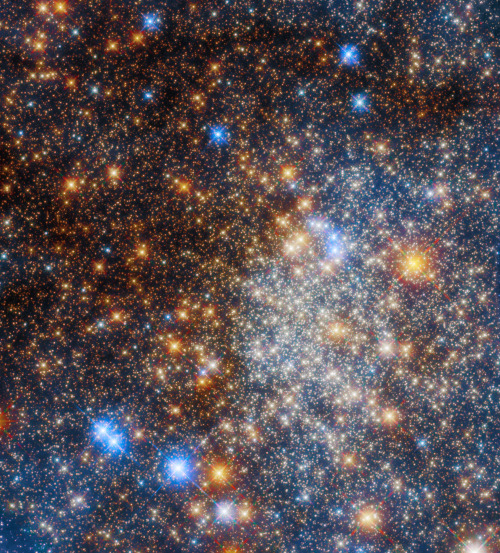Arun Prem (Indian)

Arun Prem (Indian)
Green Lake, 2020
Oil on canvas
More Posts from Lmw73 and Others


Lunar halo
@picabuzz

Blue hour.
What are Phytoplankton and Why Are They Important?
Breathe deep… and thank phytoplankton.
Why? Like plants on land, these microscopic creatures capture energy from the sun and carbon from the atmosphere to produce oxygen.

Phytoplankton are microscopic organisms that live in watery environments, both salty and fresh. Though tiny, these creatures are the foundation of the aquatic food chain. They not only sustain healthy aquatic ecosystems, they also provide important clues on climate change.
Let’s explore what these creatures are and why they are important for NASA research.
Phytoplankton are diverse
Phytoplankton are an extremely diversified group of organisms, varying from photosynthesizing bacteria, e.g. cyanobacteria, to diatoms, to chalk-coated coccolithophores. Studying this incredibly diverse group is key to understanding the health - and future - of our ocean and life on earth.

Their growth depends on the availability of carbon dioxide, sunlight and nutrients. Like land plants, these creatures require nutrients such as nitrate, phosphate, silicate, and calcium at various levels. When conditions are right, populations can grow explosively, a phenomenon known as a bloom.

Phytoplankton blooms in the South Pacific Ocean with sediment re-suspended from the ocean floor by waves and tides along much of the New Zealand coastline.
Phytoplankton are Foundational
Phytoplankton are the foundation of the aquatic food web, feeding everything from microscopic, animal-like zooplankton to multi-ton whales. Certain species of phytoplankton produce powerful biotoxins that can kill marine life and people who eat contaminated seafood.

Phytoplankton are Part of the Carbon Cycle
Phytoplankton play an important part in the flow of carbon dioxide from the atmosphere into the ocean. Carbon dioxide is consumed during photosynthesis, with carbon being incorporated in the phytoplankton, and as phytoplankton sink a portion of that carbon makes its way into the deep ocean (far away from the atmosphere).
Changes in the growth of phytoplankton may affect atmospheric carbon dioxide concentrations, which impact climate and global surface temperatures. NASA field campaigns like EXPORTS are helping to understand the ocean's impact in terms of storing carbon dioxide.

Phytoplankton are Key to Understanding a Changing Ocean
NASA studies phytoplankton in different ways with satellites, instruments, and ships. Upcoming missions like Plankton, Aerosol, Cloud, ocean Ecosystem (PACE) - set to launch Jan. 2024 - will reveal interactions between the ocean and atmosphere. This includes how they exchange carbon dioxide and how atmospheric aerosols might fuel phytoplankton growth in the ocean.
Information collected by PACE, especially about changes in plankton populations, will be available to researchers all over the world. See how this data will be used.
The Ocean Color Instrument (OCI) is integrated onto the PACE spacecraft in the cleanroom at Goddard Space Flight Center. Credit: NASA




Great Smokies family
j_kreiss






a cozy place

Pumpkin space latte, anyone? ☕
Hubble captured this festive array of stars, Terzan 12, found in the Milky Way about 15,000 light-years from Earth. The stars in this cluster are bound together by gravity in a sphere-like shape and are shrouded in gas and dust. As the starlight travels through that gas and dust to Earth, blue light scatters, leaving the redder wavelengths to come through.
Download the full-resolution image here.
Make sure to follow us on Tumblr for your regular dose of space!
-
 fogandfireflies liked this · 2 months ago
fogandfireflies liked this · 2 months ago -
 maxvandenburg reblogged this · 1 year ago
maxvandenburg reblogged this · 1 year ago -
 unehistoiredelart reblogged this · 1 year ago
unehistoiredelart reblogged this · 1 year ago -
 softskyburial reblogged this · 1 year ago
softskyburial reblogged this · 1 year ago -
 duwango reblogged this · 1 year ago
duwango reblogged this · 1 year ago -
 duwango liked this · 1 year ago
duwango liked this · 1 year ago -
 frogs-in-a-bog liked this · 1 year ago
frogs-in-a-bog liked this · 1 year ago -
 weirdluminarypopcorn reblogged this · 1 year ago
weirdluminarypopcorn reblogged this · 1 year ago -
 weirdluminarypopcorn liked this · 1 year ago
weirdluminarypopcorn liked this · 1 year ago -
 violenth0ughts liked this · 1 year ago
violenth0ughts liked this · 1 year ago -
 filippo-sangiorgio liked this · 1 year ago
filippo-sangiorgio liked this · 1 year ago -
 mermaid-admiration liked this · 1 year ago
mermaid-admiration liked this · 1 year ago -
 analogseeker reblogged this · 1 year ago
analogseeker reblogged this · 1 year ago -
 sapphophilic reblogged this · 1 year ago
sapphophilic reblogged this · 1 year ago -
 justbu4now reblogged this · 1 year ago
justbu4now reblogged this · 1 year ago -
 justbu4now liked this · 1 year ago
justbu4now liked this · 1 year ago -
 dreamreprieve reblogged this · 1 year ago
dreamreprieve reblogged this · 1 year ago -
 hermit-hedge reblogged this · 1 year ago
hermit-hedge reblogged this · 1 year ago -
 pacogabby liked this · 1 year ago
pacogabby liked this · 1 year ago -
 doctortease liked this · 1 year ago
doctortease liked this · 1 year ago -
 robodav reblogged this · 1 year ago
robodav reblogged this · 1 year ago -
 annoyinglyeclecticruins reblogged this · 1 year ago
annoyinglyeclecticruins reblogged this · 1 year ago -
 annoyinglyeclecticruins liked this · 1 year ago
annoyinglyeclecticruins liked this · 1 year ago -
 22slices reblogged this · 1 year ago
22slices reblogged this · 1 year ago -
 orchidprinc3 reblogged this · 1 year ago
orchidprinc3 reblogged this · 1 year ago -
 justanothercatastrophe reblogged this · 1 year ago
justanothercatastrophe reblogged this · 1 year ago -
 justanothercatastrophe liked this · 1 year ago
justanothercatastrophe liked this · 1 year ago -
 marshgremlin reblogged this · 1 year ago
marshgremlin reblogged this · 1 year ago -
 marshgremlin liked this · 1 year ago
marshgremlin liked this · 1 year ago -
 tweetthang96 reblogged this · 1 year ago
tweetthang96 reblogged this · 1 year ago -
 californialee reblogged this · 1 year ago
californialee reblogged this · 1 year ago -
 bbykittentoes reblogged this · 1 year ago
bbykittentoes reblogged this · 1 year ago -
 bbykittentoes liked this · 1 year ago
bbykittentoes liked this · 1 year ago -
 rosehip-cordial reblogged this · 1 year ago
rosehip-cordial reblogged this · 1 year ago -
 kalapur reblogged this · 1 year ago
kalapur reblogged this · 1 year ago -
 who-are-we-to-change liked this · 1 year ago
who-are-we-to-change liked this · 1 year ago -
 chadmojito reblogged this · 1 year ago
chadmojito reblogged this · 1 year ago -
 hellfairie liked this · 1 year ago
hellfairie liked this · 1 year ago -
 demkozmicblues reblogged this · 1 year ago
demkozmicblues reblogged this · 1 year ago -
 demkozmicblues liked this · 1 year ago
demkozmicblues liked this · 1 year ago -
 trropicalsquirrel reblogged this · 1 year ago
trropicalsquirrel reblogged this · 1 year ago -
 alt0clef reblogged this · 1 year ago
alt0clef reblogged this · 1 year ago





